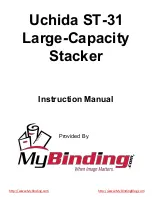
6
FI
SV
EN
DE
FR
NO
DA
ET
LV
LT
RU
How to use the Bokashi liquid?
The Bokashi liquid is high in nutrients and can be used as fertiliser.
Dilute it with water in the ratio of 1:100 before use as fertiliser.
Potential problems
The Bokashi matter or liquid may smell bad if
• not enough bran has been added to the matter.
• the liquid has not been drained often enough.
• the lid has not been closed tightly enough.
• Please note that the Bokashi odour varies depending on
the organic waste (for example, onion and coffee affect the
odour).
The Bokashi matter contains mould.
• White mould is not dangerous and is part of the process.
• Green mould is a sign that the fermentation process has been
exposed to too much air and has, as a result, been disturbed.
This happens if the matter has not been pressed tightly
enough.
Waste you can compost in the Bokashi bin:
• plant-based organic waste
• small amounts of meat and fish
Waste you cannot compost in the Bokashi bin:
• inorganic waste
• large amounts of meat or fish
• ashes
• large bones
• animal faeces
• liquids
Instructions for use of Biolan BOKASHI
Bokashi is the fermentation of organic matter
with the help of microbes. Fermentation takes
place in an anaerobic Bokashi bin by effective
micro-organisms.
Kit contents
• Bokashi bin 10 l
• Perforated tray
• Pressing plate
• Biolan EM® bran 1 kg
• instructions for use
How to use Bokashi
Place a thin layer of organic waste in the Bokashi bin. The first
layer is laid on the tray. To speed up fermentation, chop up larger
pieces of organic waste so that the microbes can start to ferment
the waste as efficiently as possible. Sprinkle about two table-
spoons of Biolan EM® bran on organic waste every time you add
waste to the bin. Tamp the organic waste down with the press-
ing plate. Leave the plate in place on top of the layer of organic
waste. Do not add more than one litre of organic waste at a time.
Close the hinged lid of the Bokashi bin carefully using the clip.
Try to avoid opening the Bokashi bin too often. Add organic
waste once a day, for instance, by keeping the organic waste to
be added to the Bokashi bin in the kitchen in a lidded container.
Fermentation produces liquid which seeps to the bottom of the
Bokashi bin. You can drain this liquid off easily into a suitable con-
tainer or the drain using the spigot on the side of the bin.
When the Bokashi bin is full, close the lid carefully and keep the
container at room temperature for two weeks. During this time,
you can drain the liquid off every so often. Gas may form in the
bin during fermentation. To let it out, open the lid. Always close
the lid carefully afterwards, using the clip.
After emptying the Bokashi bin, rinse it with water. Also remove
the tray and rinse it separately.
How to process the fermented matter?
Fermented organic waste cannot be used as soil or fertiliser as
such. It must first be processed by composting. When you choose
the method for processing the fermented matter, make sure it
does not attract vermin.
You can compost the fermented matter, for example, in a rodent-
safe composter (such as Biolan Quick Composter 220
eco
, Biolan
Biowaste Composter, Biolan Composter for Summer Cottage
Use, Biolan Stone Composter or Biolan Garden Composter with
a bottom basket) by mixing it well with the composter contents.
You can make a separate post-processing container where de-
pleted or low-nutrient soil and fermented organic waste are laid
in layers. Cover the organic waste with soil and allow to compost
for at least two weeks until the organic waste becomes indistin-
guishable from the soil.
Biolan Oy
P.O. Box 2, FI-27501 Kauttua
www.biolan.com
Содержание BOKASHI
Страница 2: ...2 BOKASHI 1 KG 23 cm 26 cm 29 5 cm 10 L ...
Страница 3: ...3 FI SV EN DE FR NO DA ET LV LT RU 1 100 6 3 1 2 2X 4 5 ...
Страница 15: ...15 FI SV EN DE FR NO DA ET LV LT RU ...
Страница 16: ......


































